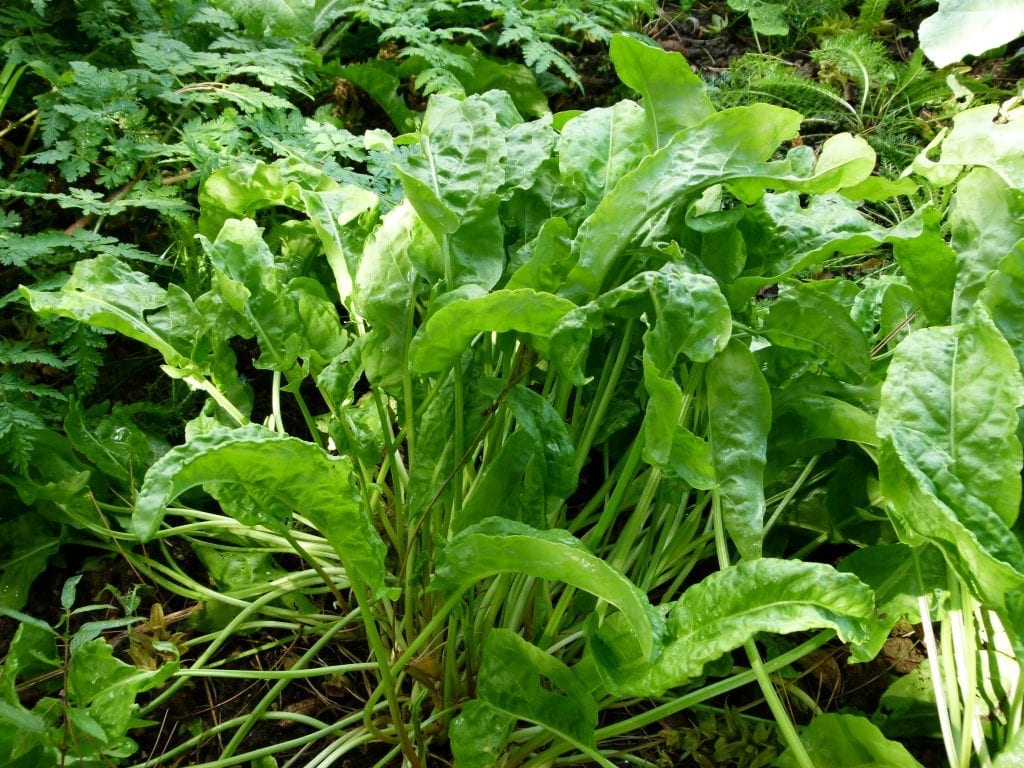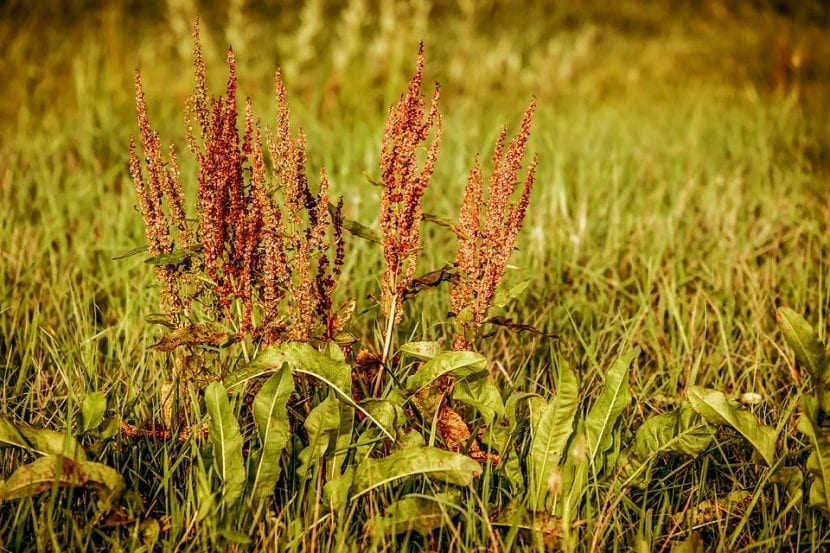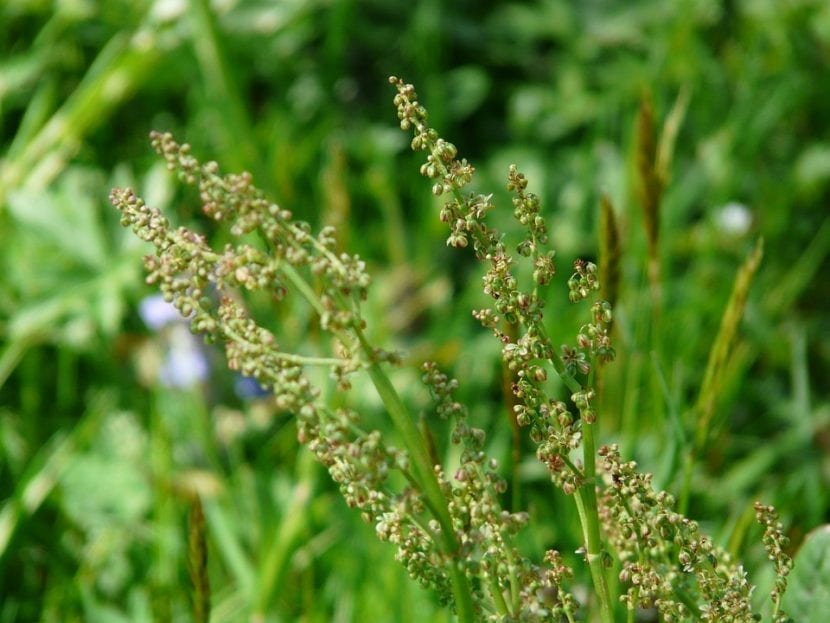
Image - Wikimedia / Dinkum
La dock It is one of the most common herbs in Europe, found in forests and in shady areas near fresh water sources, such as swamps, rivers or even streams. But it is also very interesting to grow in a pot or in the garden, since it is edible and medicinal.
Knowing her is therefore highly recommended 😉. So then you will be able to discover everything about her.
Origin and characteristics

Sorrel, known as common sorrel, wild sorrel, respigo or respigos, or cruet, is a native herb of Europe whose scientific name is aceto rumex. Reaches a height of up to 1 meter, and has perennial roots, somewhat woody. The stem is erect, simple, and is usually reddish at the base.
Its leaves are lanceolate, fleshy, the lower ones having a short petiole that is reduced in the higher ones until it disappears in the upper ones. The flowers are dioecious (there are female and male), they sprout in the upper part of the plant and are reddish-green when ripe. The seeds are shiny brown.
What are the care of the aceto rumex?

Image - Wikimedia / Ivar Leidus
If you want to have a specimen in your garden or terrace, we recommend providing the following care:
Location
It is a plant that must be abroad, in full sun or in semi-shade.
Earth
- Flower pot: it will grow without problems in almost any substrate; Now, it is advisable to mix the universal (that we can get here for example) with 10 or 15% perlite or another similar material, such as claystone, as this will ensure that its roots will have a good development.
- Garden: fertile, with good drainage. If ours is poor in nutrients, it is very compact and / or it has been a very punished soil either by erosion or by having practiced a very aggressive agriculture (using chemicals in excess, not letting the land rest, etc.). What we can do is dig a hole of at least 50cm x 50cm, cover it with a shading mesh (like this one in here) and fill it with the substrate mix mentioned above.
Irrigation
The frequency of irrigation will vary greatly throughout the year, not only because the climate is changing, but also because the water needs of Rumex acetosa will not be the same in summer as in autumn. And is that while during the warm season it will require very frequent waterings it is when it will be growing the fastest, during the autumn and winter season, this need for water will be less.
Starting from this, and always keeping in mind that he lives near water courses, we water an average of 4-5 times a week in summer, and a little less often the rest of the year.
Even so, in case of doubt we will check the humidity of the soil, either by helping us with a digital moisture meter, with a thin wooden stick (if it comes out practically clean when we extract it, we will water it) or digging a little next to the plant (if at about five centimeters we see that the earth is fresh and of a darker color than on the surface, we will wait a few days to water again).
Subscriber

It is advisable to pay in spring and summer with organic fertilizers, such as guano (on sale here), manure from herbivorous animals, or others that we can have at home such as egg and banana shells, among others that we mention in this link.
Multiplication
El aceto rumex multiplies by seeds in late winter. The way to proceed is as follows:
- The first thing to do is fill a seedbed (flowerpot, milk containers, glasses of yogurt, ... anything that is waterproof and that has or can have some holes for drainage) with universal substrate.
- Then, we water conscientiously and place the seeds on the surface, ensuring that they are a little separated from each other. Ideally, if for example we use a seedling tray, we put a maximum of two seeds in each alveolus since this way later when they grow a little it will be much easier to transfer them to individual pots or to the garden.
- The next step is to cover them with a thin layer of substrate, and water again with a sprayer.
- Finally, we place the seedbed outside, in semi-shade.
If all goes well, they will germinate in 2-3 weeks.
Harvest
The leaves are collected in mid to late spring.
Rusticity
Resists cold and frost down to -7ºC.
What uses does sorrel have?

Culinary
Sorrel is an edible plant, of which the leaves are used in salads, as a condiment, or in soups.
Medicinal
It is an herb with very interesting properties: it is diuretic, aperitif, and antiscorbutic.
As you can see, the aceto rumex It is a plant that may seem of little use to us, but when you get to know it ... things change. Therefore, do not hesitate to get a few seeds and enjoy it in your garden or terrace.